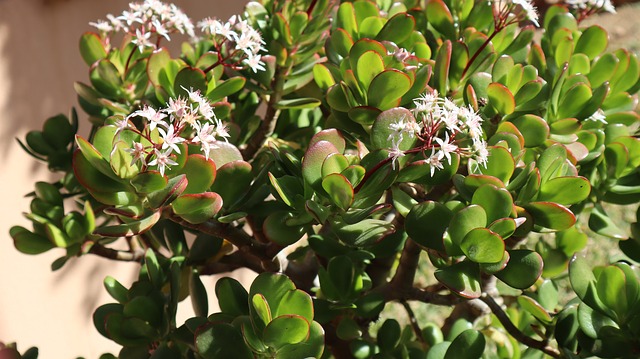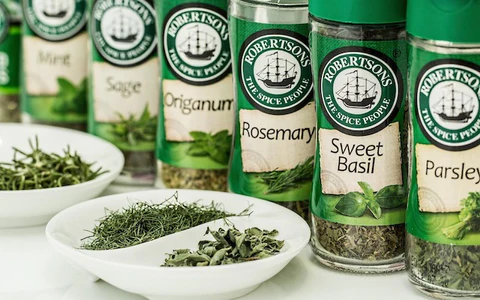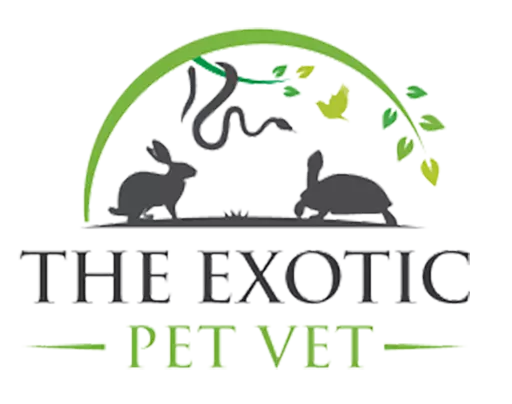Creating a safe and comfortable environment for your bearded dragon is important for their overall well-being. One essential aspect of their enclosure is the choice of plants.
Incorporating live plants not only adds aesthetic appeal but also provides a lots of benefits to your scaly friend. However, it’s important to ensure that the plants you select are safe and non-toxic for bearded dragons.
From the vibrant and hardy Aloe Vera to the leafy and nutritious Hibiscus, this guide will give you a curated list of best safe plants for bearded dragons tank.
Advantages & Disadvantages of Keeping Live Plants in Your Bearded Dragon Enclosure
Advantages
There are several pros to using real plants in your bearded dragon’s tank. Here are some of the key advantages:
1. Aesthetics: Adding plants enhance the visual appeal of the enclosure, creating a more natural and visually pleasing habitat for your bearded dragon. They provide a lush and vibrant environment, mimicking their natural habitat.
2. Mental Stimulation: The presence of plants stimulates your bearded dragon’s natural instincts. They can explore, climb, and interact with the plants, promoting mental engagement and preventing boredom.
3. Oxygen Production: Live plants contribute to the oxygen levels in the tank, ensuring a fresh and healthy atmosphere for your pet. They absorb carbon dioxide and release oxygen during photosynthesis, improving air quality.
4. Humidity Regulation: Certain plant species can help maintain optimal humidity levels in the enclosure. They release moisture through transpiration, creating a more comfortable and suitable environment for your bearded dragon.
5. Nutritional Benefits: Some plant species, such as edible herbs and greens, can serve as a natural and nutritious food source for your bearded dragon. They offer a variety of vitamins, minerals, and dietary fiber, promoting a well-balanced diet.
Remember to research and select safe plant to use for your bearded dragon’s enclosure to ensure their health and safety.
Disadvantages
While using real plants in your bearded dragon’s tank has several advantages, there are also some cons to consider. Here are a few drawbacks:
1. Potential Toxicity: Not all plants are safe for your bearded dragon. Many houseplants and outdoor plants can be toxic if ingested. It’s crucial to thoroughly research and select only non-toxic plant species for your pet’s enclosure to avoid any potential harm.
2. Maintenance: Plants require regular care and maintenance. They need proper lighting, watering, and pruning to ensure their health and prevent overgrowth. This can be time-consuming and may add to the overall maintenance of the enclosure.
3. Risk of Pesticides: Plants may come with the risk of exposure to pesticides or other chemicals. It’s essential to source plants from reputable suppliers or grow them organically to avoid potential contamination that could harm your bearded dragon.
4. Soil and Substrate Issues: Using soil or other substrates for planting plants can create potential hygiene issues. It may increase the risk of bacterial or fungal growth, which can negatively impact your dragon’s health. Regular monitoring and cleaning of the substrate are necessary to prevent any adverse effects.
Consider these cons and weigh them against the benefits when deciding whether to use real plants in your bearded dragon’s tank.
10 Safe Plants For Bearded Dragon Tank
1. Aloe Vera

Aloe vera plants are a great addition to any bearded dragon enclosure. Providing extra humidity, this succulent look beautiful and great for supplementing the dragon’s diet with vitamins, minerals, and amino acids.
Aloe plant is also a natural anti-inflammatory. It is ideal for treating any minor skin abrasions or infections that your pet might suffer from.
Nibble away! Bearded dragons love to nibble on the plant, but be careful as eating too much can cause diarrhea. Not only that, it reduces the dust and improves air quality since its leaves produce oxygen.
Care is needed though. Aloe vera will need indirect sunlight, and has to be monitored for any pests or molds.
Avoid using fertilizers, as they are poisonous. With attention and caution, Aloe vera will help your furry friend grow and remain healthy.
Placement In Tank: It is best to place Aloe vera in the middle towards the back. Make sure not to put it right next to the basking spot.
Care Tips: Little water once in a week.
2. Leatherleaf Sedge (Carex buchananii)

Leatherleaf Sedge isn’t for everyone, but if you’re looking to provide a realistic habitat for your dragon, it’s worth considering.
This ornamental grass is perfect for creating a desert-like environment for a bearded dragon. Its rust-colored blades offer a great aesthetic, and it can provide a sizable hiding spot for your bearded dragon.
The main downside of Leatherleaf Sedge is obtaining it. It is rarely found already potted and grown. To get Leatherleaf Sedge, you must grow it from seed, which requires patience and time.
Also, it can become quite large when fully grown. If left untrimmed, it could eventually crowd out your dragon’s space. All that’s required is patience and upkeep, but the results are certainly worth the effort.
Placement in tank: Definitely need a bigger tank if you want a desert like enclosure with this plant. Plant the grass in the warmer spot.
Care Tips: Water only when the soil is dry. Trimming once a week is necessary.
3. Ficus (Ficus Benjamina)

Ficus trees, which are also commonly known as weeping figs, are popular all around. Often seen in lobbies and doctor’s offices, these tropical small trees bring a bit of the outdoors to indoor settings.
They do best in pots, and moving them around the habitat is easy. Simple sand and gravel substrates will not be able to support their branches, though.
It’s important to make sure the temperature doesn’t drop too low, while adequate lighting and regular watering will ensure a long-lasting indoor plant.
Not only are Ficus plants pleasing to the eye, but they’re also safe for bearded dragons to eat. They bring a burst of natural greenery to the space, making them an ideal pick for bearded dragon habitats.
Placement in tank: Place in the bank of the tank where it’s cooler.
Care Tips: These trees often grows from cutting, so you don’t need to buy a whole new plant. They need to be kept in areas which are not too bright and should be watered only when the soil is dry.
4. Hoya australis/Waxvine

Commonly referred to as “wax vine,” Hoya australis is an excellent plant to keep in a bearded dragon’s habitat. In no time at all, it can grow to a length of 33 feet.
So regular pruning is recommended to keep it manageable and provide your reptile with plenty of lush foliage. Bearded dragons do not usually eat Hoya australis, but they do enjoy climbing and exploring around its sturdy vines.
It is soft and easy to shape to suit your need. You can draw out trails, decorate climbing branches, or build a beautiful scenery.
Placement in Tank: Place the plant in or near the middle or warmest part of the aquarium, however make sure it is not too close to the basking area.
Care Tips: The Hoya australis is an expensive plant yet very safe and straightforward to maintain. It flourishes when properly potted in rich, healthy soil, so keeping it in a pot is ideal. And even better, these plants can quickly grow from cuttings, so you can have many at the same time. Mist the plant everyday.
5. Bromeliads (Bromeliaceae)

Bromeliads belong to the same family as pineapples and many have a striking resemblance. The leaves have a unique pattern with tall stalks full of color sprouting from the middle and larger leaves surrounding the base.
The leaves are so tough that your bearded dragon may not even be interested in chomping them after a few tries. It’s an incredibly long-lasting plant, even with bearded dragon nibbling, as they can take a fair bit of munching and still remain resilient.
These plants make great tank decorations as many colors, shapes, and sizes are available to suit your dragon’s enclosure.
Placement in tank: Place the plant in the darker side of the tank.
Care Tips: With minimal care, these plants require just one watering a week and don’t need full sunlight to thrive. However, as they can get quite large, some trimming could be necessary to keep them in check.
6. Echeveria (Echeveria spp)

Echeveria plants, commonly referred to as hens and chicks, are small succulents that are perfectly suited plants for your bearded dragon environment.
This species consists of about 150 different types, and the ones typically found in nurseries are safe for your beardie.
With plump leaves, these rosettes may only be a few inches in diameter, but are strong enough for your bearded dragon to walk on.
These plants have sturdy, thick leaves which provide a safe walking surface for your pet. Echeveria initially come from Central and South America, yet they can comfortably live in certain hotter Northern regions as well.
Just remember that these plants need occasional soakings in order to stay healthy. These easy-to-manage succulents can add a gorgeous pop of color to your pet’s habitat.
Placement in Tank: Keep them in the warmer part of the tank close to the basking spot.
Care Tips: They require minimal maintenance; while regular misting and humidity are necessary to sustain its overall health. It isn’t demanding when it comes to water. Light misting when the soil is dry will be fine.
7. Dwarf Jade Plant (Portulacaria afra)

Portulacaria afra, or dwarf jade, is a wonderful choice for a bearded dragon tank. This succulent is not only safe for your pet, but also edible for humans.
These egg-shaped plants have thick, juicy leaves that sprout from a reddish stem. The stem is often different than that of the toxic jade plant, which is usually solid green and can get woody as it matures.
Dwarf jades can grow fairly large in the wild, but in the tank they are slow-growing and can be kept as a “companion” for years with the right substrate.
When choosing a substrate, choose a potting mix that is gravelly and sandy, which will help the plant thrive.
Avoid the Crassula ovata, also known as the jade tree, money tree, or lucky plant, as it can be toxic to your bearded dragon.
Placement in tank: Place the plant on the side of the tank that is closer to the heater, but not right next to the basking spot.
Care Tips: For a dwarf jade to thrive, a substrate of gravel and sand should be used inside a bearded dragon enclosure. This mix or soil allows the plant to flourish in an ideal environment.
8. Blushing Bride (Tillandsia Ionantha)

The blushing bride plant, also known as the Air Plant or Tillandsia ionantha, is a popular and low-maintenance addition to your bearded dragon’s home. They thrive without soil.
This live plant absorbs moisture from the air, making it ideal for humid environments like your dragon’s enclosure. With versatile placement options, they can be positioned or glued onto various surfaces.
Safe for your beardie to nibble on, these plants come in a range of colors, shapes, and sizes. From green to silvery, pink to red, they may even bloom with tiny purple or pink blossoms.
They can handle the heat and lighting needs of the beardie, so it doesn’t require much extra care. For these reasons, the Blushing Bride and other air plants are my top choice for bearded dragons.
Placement in tank: The interesting fact about Blushing Bride is that it can be affixed to nearly any surface. Whether you hang it from branches, secure it with glue to furnishings, or stick it to glass, this plant is easy to keep.
Care Tips: They require minimal space, only need misting every two weeks, and can withstand the necessary lighting and heat, making them an excellent choice for your dragon’s well-being.
9. Haworthia

Haworthia plants are amongst the most popular succulent cultivers to grow in enclosed spaces. Also referred to as zebra plants or zebra haworthia, these spikey-looking, small plants with thick leaves are similar to aloe vera, yet they have raised whitish stripes across the leaves.
Boasting over 400 different types of species, many of them are safe for bearded dragons. These plants require no extra space thanks to their small size as they produce a few inches across rosette of leaves.
Although it resembling Aloe Vera, Haworthia has its own features – soft spikes and stripes.
Avoid neon or “unnatural” colored haworthia which may have been sprayed with unknown chemicals.
Placement in tanks: Keep it close to the basking spot.
Care Tips: Due to its drought-resistance, the plant requires soaked soil through all periods of dryness.
10. Bolivian Wandering Jew (Callisia Repens)

Bolivian Wandering Jews are a great addition to a bearded dragon tank. They are non-toxic and produce gorgeous dense foliage.
This fast-growing plant creates a carpet of greenery that requires regular pruning to keep it from becoming leggy. It can be easily grown, as the pruned clippings can be used to create a new plant. Rich, moist soil is essential to keep the plant healthy.
It can sit in a full sun to partial shade setting, making it perfect for a bearded dragon’s enclosure. These plants are completely non-toxic. Your beardie can munch on them as much as it wants.
Placement in Tank: In the cooler side of the tank.
Care Tips: To cultivate these plants, cut off around 2 inches of freshly grown stems in either spring or fall. Place the stems in some moist soil and it should soon produce a whole new plant.
List of Safe Herbs to Keep in the Enclosure

Rather than individually categorizing every safe herb for bearded dragons, I will provide a comprehensive list of commonly safe herbs in this section. It is worth noting that many plants thrive better outside of the enclosure due to their specific light and humidity requirements.
One excellent approach is to keep a variety of herbs in small pots and rotate them every few days. This not only provides your beardie with a change of scenery but also introduces new options for inspection and munching.
Simply place a few small herb pots in the beardie tank, leave them for approximately two or three days, and then replace them with different herbs.
The following is a list of commonly safe herbs for bearded dragons:
- Mint (sweet mint, peppermint)
- Basil
- Rosemary
- Thyme
- Oregano
- Parsley
- Cilantro
- Dill
- Fennel
- Lavender
- Wheatgrass
- Lemon balm
List of Harmful Plants For Your Bearded Dragon
Avoiding certain plants is crucial to ensure the safety and well-being of your bearded dragon. These curious creatures may unknowingly chew on plants, so it’s important to be mindful of potential risks in their habitat.
Numerous plants contain compounds that can be harmful if ingested by your bearded dragon, leading to various health issues, including digestive problems, organ damage, and even fatal consequences.
Here are some plants that should be avoided:
- Boxwood
- Oleander
- Euphorbia
- Jimsonweed
- Datura
- Deadly Nightshade
- English Ivy
- Foxglove
- Privet
- Lantana
- Buttercup
- Daffodils and jonquils
- Elderberry
- Holly
- Hydrangea
- Iris
- Juniper
- Mistletoe
- Monkshood
- Nightshade (belladonna)
- Oak
- Pine trees (needles, sap, anything)
- Poison ivy, oak, or sumac
- Poinsettia
- Rhododendrons
- Any kind of tobacco plant
- Tulips
- Virginia creeper
- Water hemlock
Should You Use Real or Fake Plants in Your Bearded Dragon’s Tank?
The choice between real or fake plants for your bearded dragon’s tank depends on your preferences and considerations.
Real plants offer a more natural and aesthetically pleasing environment. Plants that are safe provide enrichment for your bearded dragon, allowing them to interact, hide, and explore. Live plants also contribute to oxygen production, regulate humidity, and may offer nutritional benefits if safe edible plants are chosen. However, they require regular care, maintenance, and monitoring to prevent overgrowth, hygiene issues, or potential toxicity if the wrong plants are selected.
On the other hand, artificial plants offer convenience and low maintenance. They don’t require watering or special lighting, and there is no risk of toxicity. They provide a consistent appearance and structure within the enclosure. However, they lack the sensory stimulation, natural hiding spots, and potential health benefits of live plants.
Consider a combination of both to provide visual appeal and stimulation while ensuring ease of maintenance. Ultimately, choose based on what works best for you and your dragon’s well-being.



